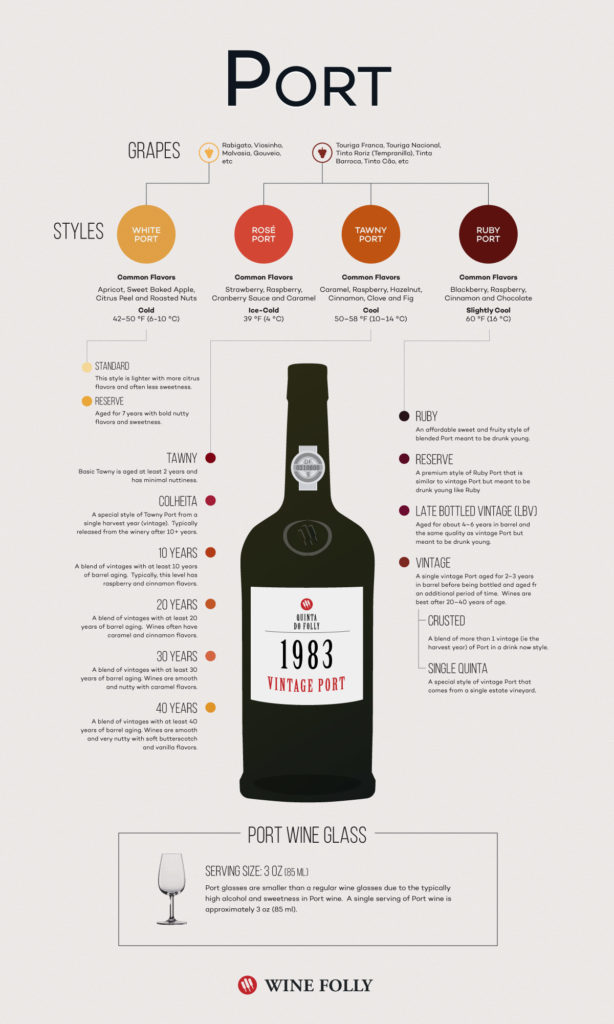What is Port

Port starts off similar to other still wines as far as the production process goes. Grapes are harvested in the fall after a season of significant struggle in low-nutrient, dry schist soil in the patchwork of Douro Valley vineyards.
How Port Tastes
Port is a sweet wine with flavors of raspberry, blackberry, caramel, cinnamon, and chocolate sauce.
There are several styles of port, but the 2 major styles of Port include a red Port with more berry and chocolate flavors (and slightly less sweetness), and a tawny-colored Port with more caramel and nut flavors (and more sweetness).
Older, fine Tawny Ports have an even wider array of subtle flavors including graphite, green peppercorn, hazelnut, almond, butterscotch, and graham cracker. Look for wines aged for 30 or more years for this level of complexity!
What are the Different Types of Port
There are many different official categories of Port, but most fall under these 4 categories:
- Ruby (Red) Port: a deeply-colored red Port which includes Vintage, Late-bottled Vintage (LBV), Crusted and Ruby Port
- Tawny Port: a very sweet barrel-aged port with oxidative nut and caramel flavors
- White Port: made with indigenous white grapes including Rabigato, Viosinho, Gouveio and Malvasia
- Rosé Port: This is a new style of Port wine made like rosé wine with flavors of strawberry, violets and caramel
How to Serve Port
Port should be served just below room temperature, around 60 °F. A popular way to serve Ruby Port in the summer (with a meal) is on the rocks with a peel of lime!
Shop Port at Table & Vine
Credit:
Wine Folly





